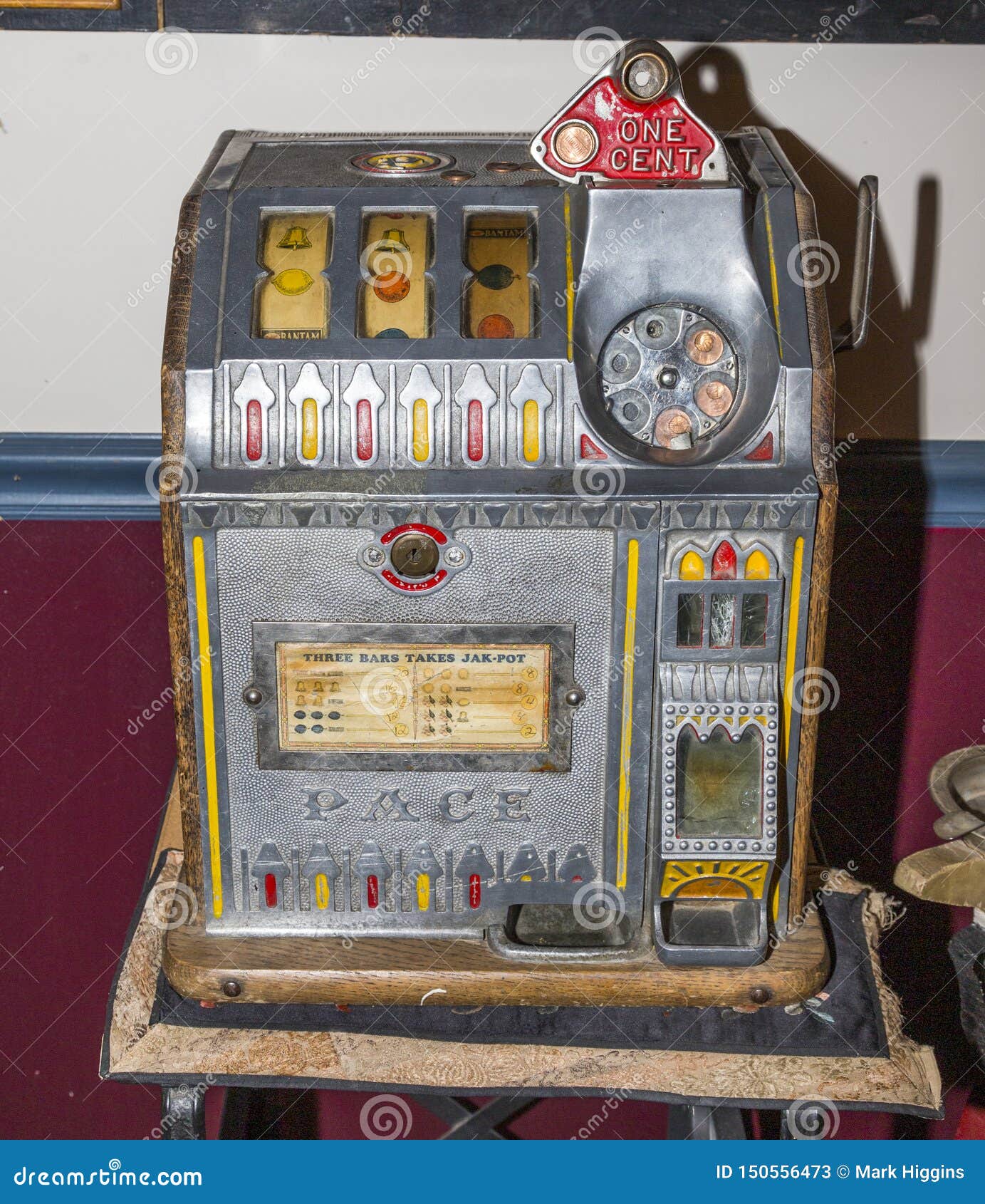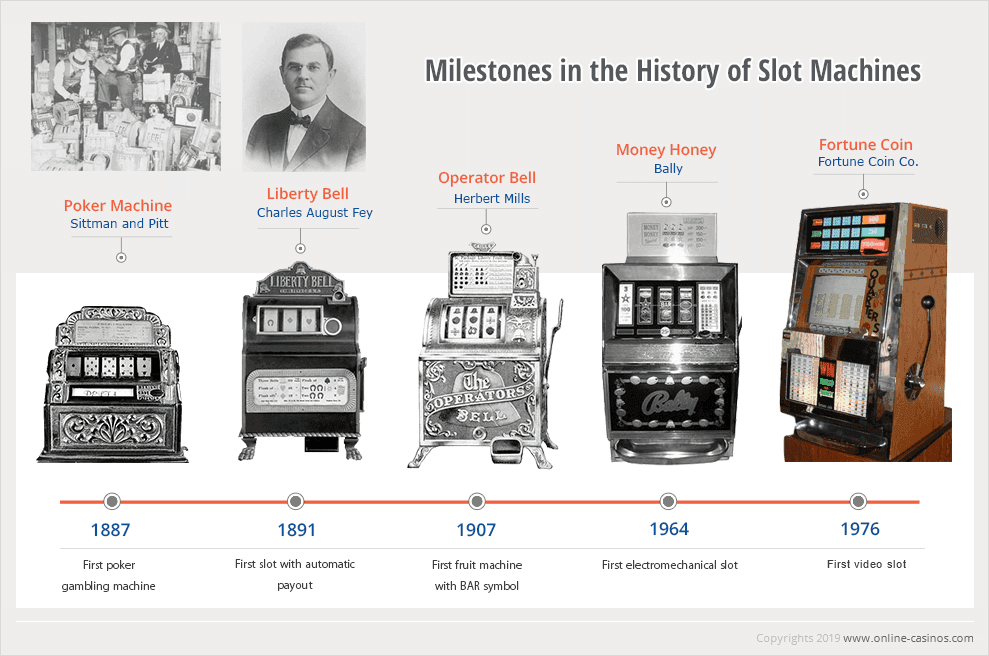- What Was The Name Of The First Slot Machine
- What Was The Name Of The First Slot Machine Gun
- What Was The Name Of The First Slot Machine Free Play
- The first simple slot machine was invented in San Francisco in 1887 by Charles Fey. However, the first modern slot machine was created in Brooklyn, New York in 1891 by Sittman and Pitt, and this.
- The “Liberty Bell” slot game gets its name from the winning combination, which is three cracked liberty bell symbols lined up on the payline. This was the first widely sold slot machine to dispense prizes for winning spins. The last notable innovation in old-time slot machines was Mill’s slot game, “Operator Bell.”.
His iconic machine actually took its name from this symbol. It wasn’t too difficult to read a win on the early slot machine, and lining up three Liberty Bells offered players the highest payout.
Introduction
The first mechanical slot machine was invented in the late 1800's by a Bavarian imiagrant named Charles Fey (1862-1944) in San Francisco. In order to understand the history of the slot machine though we need to jump back a little in time.

Poker Machines
Before Fey’s invention there were other coin-operated games of chance. The most popular one, invented by Sittman and Pitt of New York, was a 'poker machine' that was similar to a slot machine and used 5 reels with 10 poker cards on each reel. These machines were very profitable and were used in hundreds of locations (mainly in cigar stands) in the 90's (the 1890's that is). The machines paid out prizes, like a free cigar or free drinks, which were distributed manually by an attendant.
Charles Fey
When Charles began building machines, he initially built ones that were similar the popular poker machines and called them by various names, like the 'Duke' and the 'Klondike'. After building a few of them, placing them in locations, and doing very well with them, he then opened a factory in San Francisco to work on his machines full-time.
But Fey wanted to build a machine that would pay out automatically. This wasn't possible at the time due to the difficulty of calculating the vast number of winning combinations of a machine with 5 reels and 10 cards on each reel. So, in 1898, Fey designed a poker machine called the 'Card Bell' machine that retained the card symbols of the earlier poker machines but had only 3 spinning reels and only 5 symbols printed on each reel. The automatic prize-payout allowed the machine to be the first to pay out coins.
The 'Liberty Bell'

About a year later, in 1899, he created the 'Liberty Bell' machine, which added horseshoes and bells to the suit symbols on the reels. Lining up three bells would win the top prize (hence the name). Fey's design became the standard design for slot machines going forward and was so popular that all 3-reel slot machines were referred to as 'Bell Machines'.
Fey rented his machines to saloons and bars and split the profits 50/50. The demand for Liberty Bell slot machines was huge and allowed Fey to monopolize the slot machine market. Many gambling supply manufacturers wanted to buy the manufacturing and distribution rights to the Liberty Bell but Charles Fey didn't want to sell them.
But Fey could not keep up with the demand so in 1907 he partnered with Mills Novelty Company to manufacture a cast-iron machine called the 'Mills Liberty Bell'.
Unfortunately for Fey, patent laws of the time did not protect gaming devices because a Federal Judge ruled the slots could only be used for gambling and had no useful purpose. So a few years later, in 1910, the Mills Novelty Company introduced a slight variation to the Mills Liberty Bell called the 'Operator Bell'. The machines from Mills Novelty were the first to use the fruit symbols like lemons and cherries that you see on some slot machines today.
1910-1933
Part of the growth of slot machines was due the wide open nature of San Francisco during the early 1900's. The climate started to change quickly though in 1909 when San Francisco outlawed all gaming machines. Nevada did the same a year later and the state of California created a statewide ban on slot machines in 1911.
These laws did not have much of an effect on slot machine sales because slot machine manufacturers were able to find ways to alter the games to avoid getting them classified as gambling devices.
For example, the 'Liberty Bell Gum Fruit' model dispensed a package of gum, which allowed the machine to be classified as a vending machine. The Caille Brothers slots created machines that had a Swiss music box located in the bottom of the cabinet so the machine was classified as a musical device. Another popular strategy was to have slot machines dispense items like mints or gum in order to have them classified as vending machines.
Slot machines reached their peak sales during the Great Depression and the lawless days of prohibition, which began in 1919. They were popular in the speakeasies as well as the many respectable businesses that needed the profitable machines in order to stay in business during the tough economic times.
1933-1945
After prohibition ended the government decided to target slot machines since they were looked at as tools for organized crime. Raids began to increase as well as laws prohibiting the possession of slot machines or a sale of a slot machine to an illegal state. Despite these efforts, the popularity of slots machines was difficult to stop and slots were still able to operate in some places.
Post WWII
After World War II, governments started to become friendly to the slot machine industry because it now looked at it as a source of tax revenue.
What Was The Name Of The First Slot Machine
Computer Technology

In 1963, Bally developed the first electromechanical slot machine, called Money Honey, that used electronic micro-processors to decide the outcome of the game.
What Was The Name Of The First Slot Machine Gun
The first fully-electronic slot machines were introduced in Las Vegas in 1975. They were built by the Fortune Coin Company and used simulated reels on a monitor. The electronic machines caught on slower than expected because many players did not trust the fairness of the machines. In 1978, the company that would later be known as International Game Technology bought out the Fortune Coin Company.
In 1984, a Norwegian scientist named Inge Telnaes received a patent for a device titled, 'Electronic Gaming Device Utilizing a Random Number Generator for Selecting the Reel Stop Positions.' International Gaming Technology (IGT) bought the patent in 1988 and now all slot manufacturers his technology must license the patent from IGT.
COMMENTS:
What Was The Name Of The First Slot Machine Free Play
Log in to post comments
or Register
HPG ADMIN on February 27, 2013